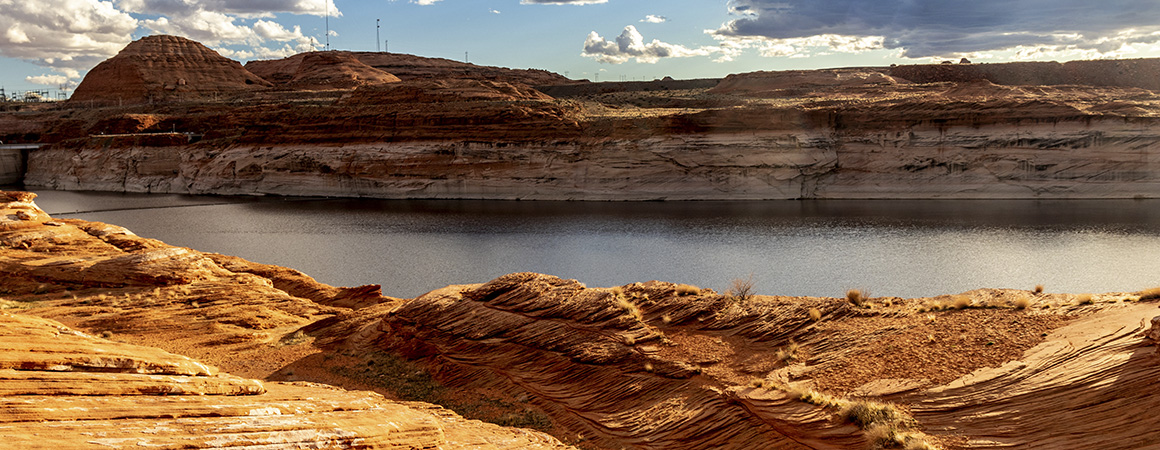The 1922 Colorado River Compact is at odds with the river’s diminishing supplies. At 100 years old, the water-rights agreement among Arizona, California, Colorado, Nevada, New Mexico, Utah, and Wyoming is facing rapidly changing conditions, the cascading effects of decreasing water levels, and impending water use restrictions.
With the states failing to meet the federal government’s Jan. 31 deadline to come to a consensus on voluntary water use reductions, the Bureau of Reclamation will likely issue regulatory and allocation requirements later this spring.
Utilities, tribes, and industry who rely on the Colorado River for water and power must change how they approach planning, operation, and collaboration.
Public sector
The public sector shoulders a heavy responsibility of managing precious water resources for both citizen consumers and private sector facilities. Whether it is government entities setting development policies, tribes investing in reliable water access for their members, or municipal utilities prioritizing infrastructure upgrades, proactive and contingency planning is an important step that can begin today.
As a starting point, utilities can take a closer look at their water supply portfolios and critical assets to identify ways to optimize resources, such as reducing water losses in the system, managing surface and groundwater resources effectively, and leveraging available funding.
In severe cases, utilities may need to diversify their water supply portfolios to provide long-term reliability. Alternative sources may include conservation, potable reuse, or stormwater capture. Utilities will need to identify and balance the trade-offs of incorporating alternative water supplies such as public health, the environment, existing infrastructure, changing regulations, and the community.
On top of water risk, utilities also face reputational risk as they manage changes. Proactive conversations and relationship building between the utility and its users now can build understanding of anticipated changes (including rate increases or conservation efforts) and allow for appropriate planning.
Private sector
Private sector companies may be impacted significantly by the dynamic condition of the Colorado River Basin, particularly those that rely heavily on water for their operations. In addition to navigating an evolving regulatory environment, companies are facing changes in water quantity and quality that may impact their operations. Private sector companies can plan for long-term changes and restrictions now by:
- Evaluating their water footprints or that of their suppliers
- Exploring facility optimization, water efficiency, and reuse projects
- Participating in public policy conversations
- Investing in innovative and collaborative solutions to protect and replenish water in the watersheds where they operate
- Engaging in collective action efforts across their supply chains, including advocating for regenerative agricultural practices and efforts that would translate into win-win situations
Like the public sector, public perception is a real consideration for businesses. Consumers, employees, and shareholders are looking for businesses who are operating in a responsible manner. Approaching water use and management with social, cultural, and environmental goals in mind that adapt for the future can help bolster not only preparedness for change, but create a positive public image for stakeholders, investors, and employees.
Opportunity for public-private collaborations
The challenges in the Colorado River Basin also provide an opportunity for public and private entities to work together on mutually beneficial projects and programs. Regional, county, and municipal water projects, plans, and studies may require funding that is not immediately available.
Private sector companies are often looking for “outside the fence” projects in the watershed where they operate in order to meet their environmental, social, and corporate governance (ESG) goals or commitments. Matching impactful public water projects with private funding can help fill funding gaps, meet match requirements for federal funds, and have enduring value and impact on communities and the watershed.
It takes everyone
The risks facing Colorado River Basin users, including the potential impacts of a water shortage declaration, are complex issues that will require all stakeholders — municipal, private companies, and tribes — to work together in order to find mutually beneficial solutions.
By identifying short- and long-term opportunities, utilities, tribes, and industry can take proactive steps now to safeguard the river for the next 100 years.


